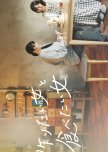Quit
Embarking on the journal management journey six years ago was like stepping into a world where the love for reading and a flair for language collided. Little did I know that beyond the realms of manuscripts lay a labyrinth of challenges that would test not just my linguistic finesse but also my ability to navigate the intricacies of people, time, and content.
In the beginning, it was the sheer joy of immersing myself in the written word, fueled by the confidence of a "very excellent" rating in my last Uji Kemahiran Berbahasa Indonesia (UKBI). However, this enthusiasm waned as I encountered manuscripts that meandered into the realm of verbal expression, forsaking the decorum of formal writing. The struggle intensified when grappling with abstract philosophical concepts, and the frustration peaked when confronted with the loss of coherent ideas. Small typos, seemingly inconspicuous to some, became my Achilles' heel.
The multifaceted nature of journal management revealed itself in three dimensions: working with people, managing time, and content editing. Beyond the solitary act of reading, I found myself entangled in interactions with editors, providing guidance, managing correspondence, and navigating the bureaucratic maze of administrative hurdles. Each day became a delicate dance of efficient time management, ensuring that every task seamlessly transitioned into the next while maintaining precision.
Content editing emerged as the true litmus test for my reading skills. It demanded a keen eye for detail, a profound understanding of the subject matter, and an innate ability to enhance the clarity and coherence of the manuscript. It was here that the true essence of my linguistic proficiency manifested itself.
Amidst these challenges, the presence of an indifferent editor-in-chief added an unexpected layer of frustration. His managerial style revolved around perfunctory inquiries such as, "Is it done?" or dismissive remarks like, "Don't do as you please." The lack of appreciation for the exhaustive efforts invested in the role left me feeling weary and undervalued.
Despite my efforts to share the workload by training junior colleagues, the burden of shouldering responsibilities from the upstream to downstream proved to be increasingly taxing. The tipping point arrived when, in the face of mounting challenges, I contemplated not a quiet departure by neglecting responsibilities but a dignified exit – removing the crown and proclaiming, "I've done my best, and now I have no energy left."
As I stand at this crossroads, the decision to continue or bid farewell remains uncertain. The journey in journal management has been a roller coaster of intellectual stimulation, bureaucratic entanglements, and personal resilience. It is a tale of personal growth, professional endurance, and the pursuit of excellence in the face of adversity. The intricate tapestry of challenges has woven a narrative that goes beyond the mere act of managing a journal, shaping an odyssey of self-discovery and unwavering determination.









0 Comments